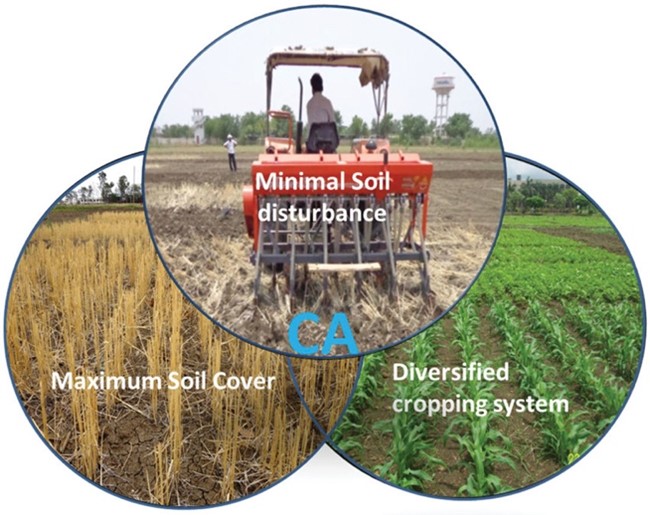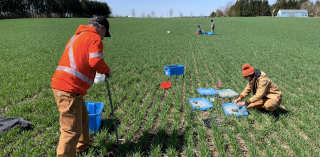By: Tracy Myers, Eastern Valley Regional Communication Coordinator
Tillage 2000 was an innovative and unique research project involving 38 cooperators in southern Ontario from 1986 to 1990. The premise of this research was to determine whether or not conservation tillage altered or enhanced properties of soil or made significant changes to crop production. Thirty years later we are revisiting the project to assess how long-term conservation tillage can offer multiple benefits to crop production.

The primary objective of Tillage 2000 was to look at various conservation techniques used that enhanced crop production while, at the same time, minimizing impacts to the soil. As a follow-up to this initial project a more current assessment will be conducted, revisiting the initial assessment and determining what the benefits of long-term conservation tillage might entail. Conservation Tillage 2025 will focus on revisiting several of the original farm locations, in southern Ontario, to see if there are long-term impacts from conservation tillage. Field data collected in 2022 will serve as a baseline. Some of the relevant research will revolve around such areas as impact on soil erosion and enhanced crop growth. The focus will be to conduct a current assessment in order to create solid Best Management Practices for crop production in southern Ontario.

Project results from Tillage 2000 provided a wealth of knowledge for researchers. Eight field sites of winter wheat, corn and soybeans were measured for population, height and plant biomass. A total of 174 benchmarks were measured and sampled on these sites. Ten sites were measured for soil properties and erosion. All data on these crops has been statistically analyzed. The big take-away from the research indicates that there was a moderate to severe measurement of soil loss. Areas that were drier in nature seemed to suffer from a severity in soil loss. Measurements also indicated varying degrees of erosion, depending on whether or not the landform was located on an upper or lower slope. It is important to remember that these results are comparative of a dry year in 2022 as opposed to crop data from 1986-1990.
Revisiting 30 years of conservation tillage practices and research is primary to assessing the long-term benefits on all crop production and management. Conservation Tillage 2025 will revisit the 2022 data and research and provide us with new information on the long-term effects of our new tillage techniques. The lead in this research project is Dr. David Lobb of the University of Manitoba, in collaboration with Ontario Soil & Crop Improvement Association (OSCIA). We look forward to the new research results upon completion of Conservation Tillage 2025, a follow-up research project. More information on the project can be obtained from Dr. Lobb at David.Lobb@umanitoba.ca or Andrew Graham (OSCIA) at agraham@ontariosoilcrop.org.